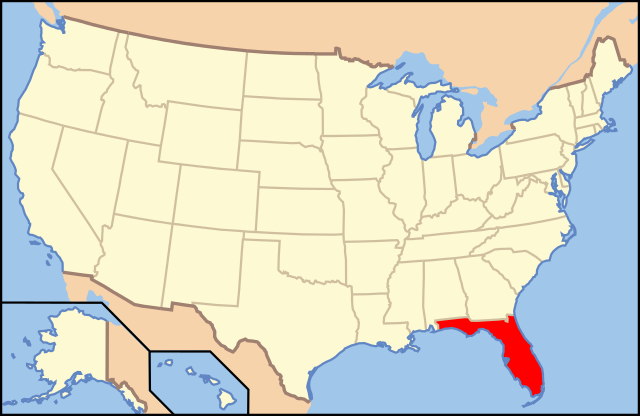 |
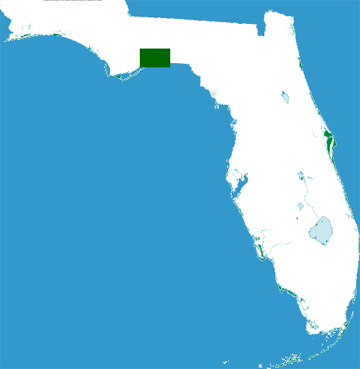 |
St. Marks National Wildlife Refuge is one of the oldest wildlife refuges in the United States. Established in 1931 as a wintering ground for migratory birds, it encompasses 70,000 acres spread between Wakulla, Jefferson, and Taylor Counties in the state of Florida.
The refuge includes several Gulf of Mexico coastal habitats, such as saltwater marshes, islands, tidal creeks, and the estuaries of seven north Florida rivers. It is home to a diverse range of plant and animal life and also has a long history of human use, including structures such as the St. Marks Lighthouse, the second oldest lighthouse in Florida.
The refuge is a gateway site for the Great Florida Birding Trail. |
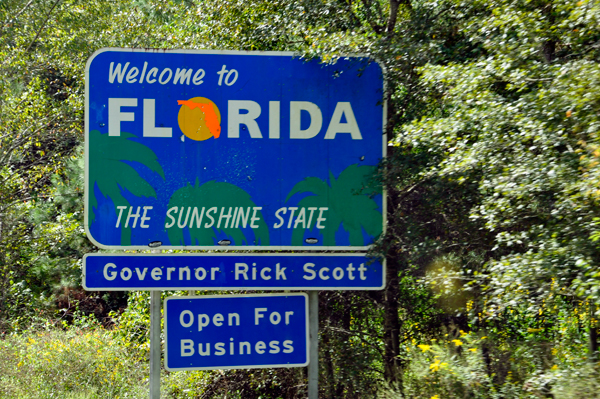 |
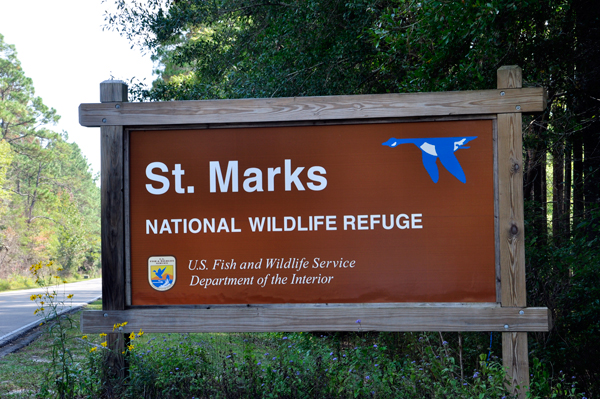 |
Lee and Karen Duquette stopped
at the large Visitors Center which had maps and brochures to help then
enjoy their trip. Inside the Visitors Center there was also a bookstore
offering a wide variety of books and merchandise for sale. Next door
to the Visitors Center is the Education building offering comfortable
meeting facilities in one half of the building and facilities and staff
devoted to education in the other half.
Then they walked the Plum Orchard Pond Trail, an easy 1/3 mile trail. |
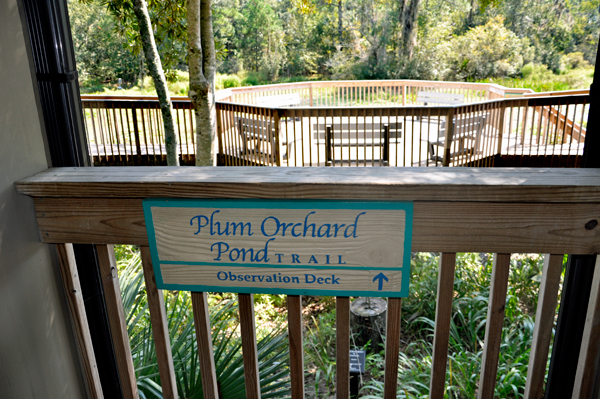 |
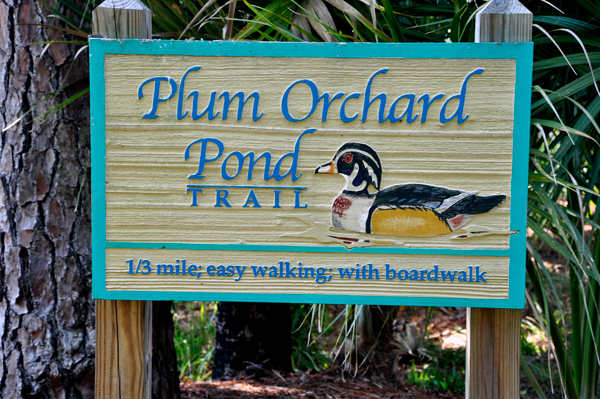 |
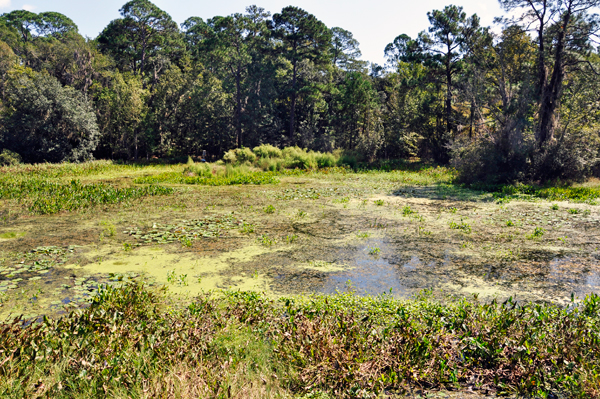 |
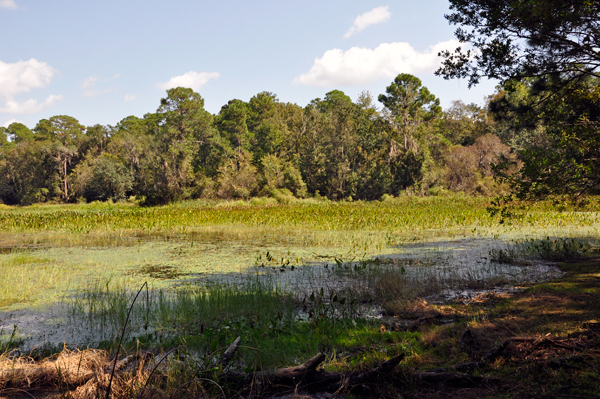 |
Karen Duquette enjoyed the
Animal Olympics Trail Challenge, which had signs and short physical
activities for kids to try to do. |
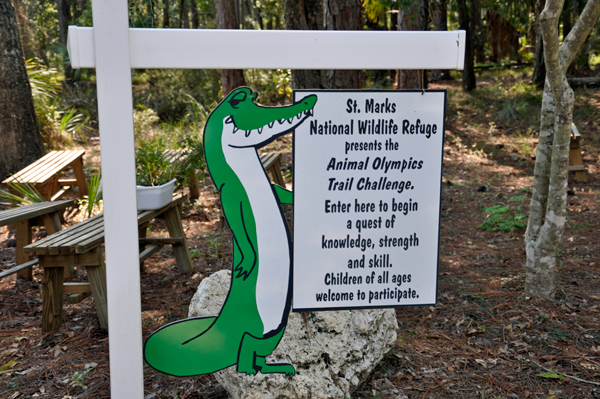 |
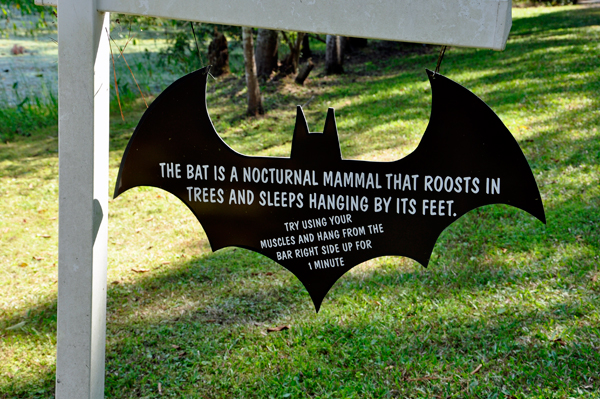 |
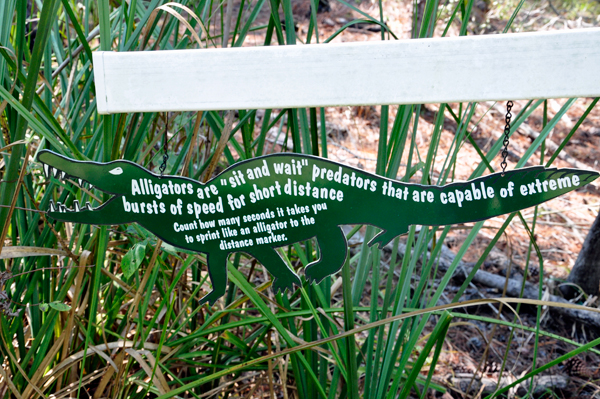 |
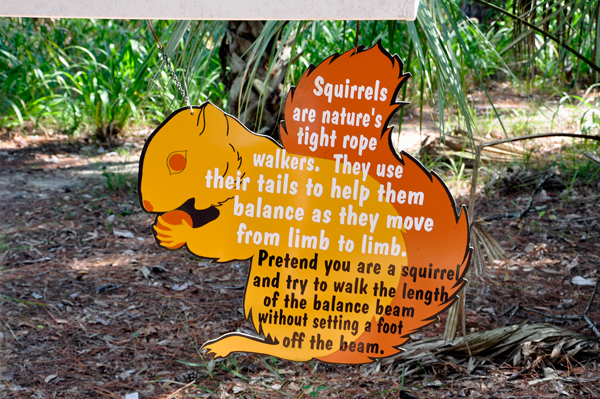 |
Below: Lee Duquette even
did a bit of hopping, or at least he attempted to do so. |
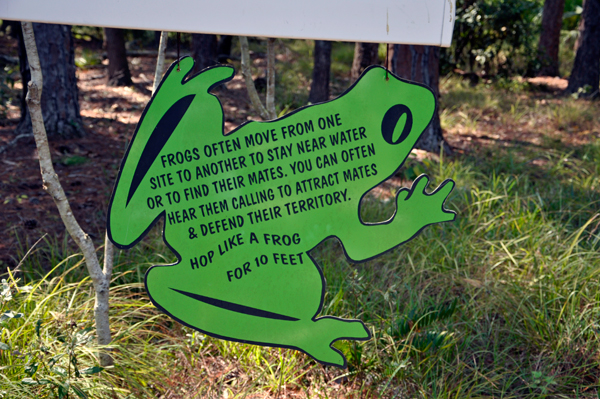 |
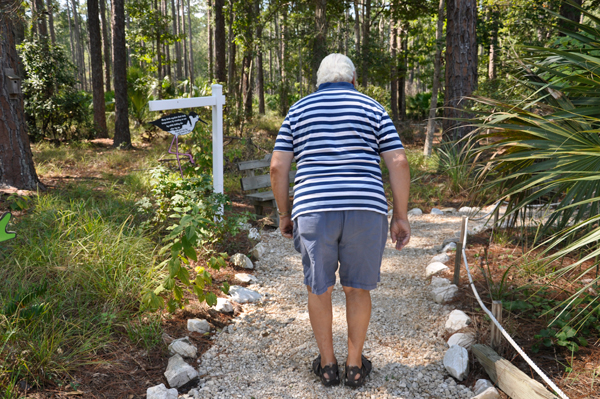 |
Below: Lee
Duquette was not too steady standing on one leg, but Karen Duquette
did just fine. |
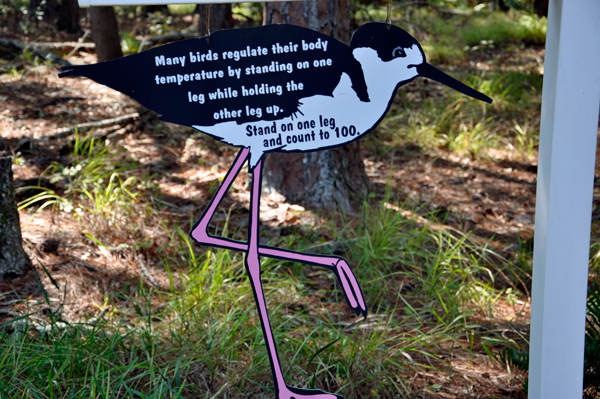 |
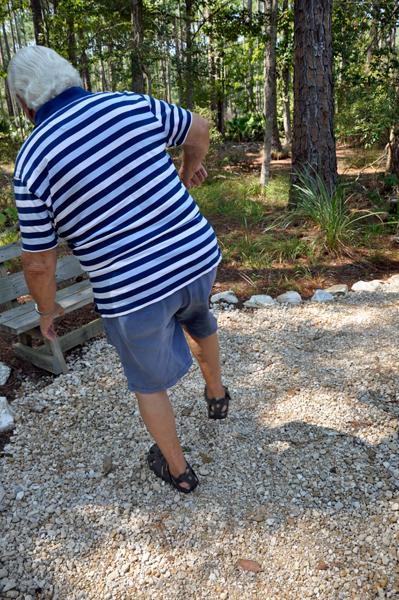 |
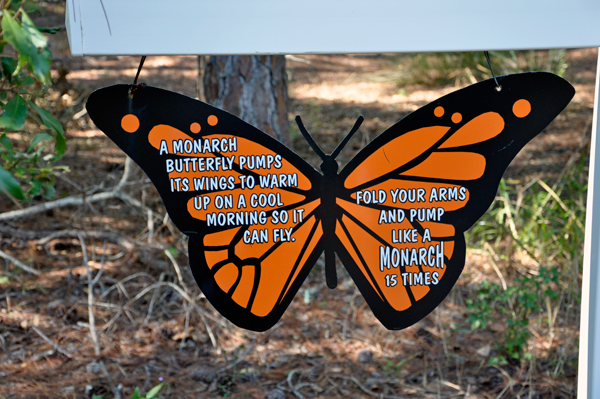 |
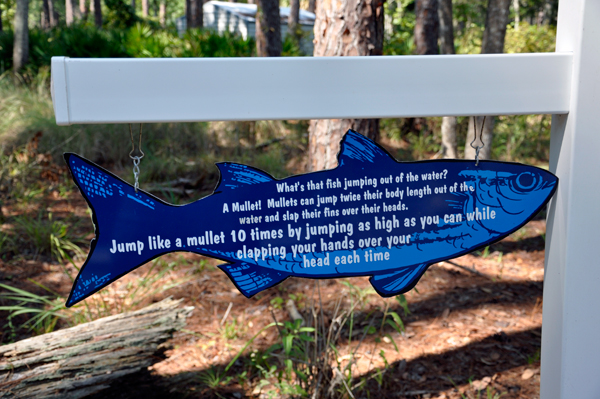 |
The St. Marks National Wildlife
Refuge is also home to one of the coveted wintering sites for the endangered
Whooping Cranes that are led south by the ultra-light aircraft of Operation
Migration. Operation Migration begins training Whooping Crane chicks
with the aircraft shortly after birth and continue to the time of migration
when they act as surrogate parents leading the birds south and imprinting
their first annual migration. However, Lee and Karen Duquette did not
see any Whooping Cranes. In fact, they did not see a lot of birds, but
Lee Duquette got ONE good photo of a bird even though the bird really
blended into the background. |
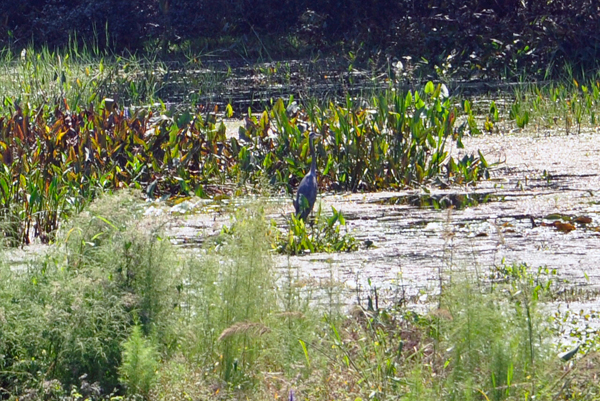 |
Below: Lee and Karen Duquette
enjoyed hiking, bird watching, butterfly watching and viewing the historic
St. Marks Lighthouse on beautiful bay. |
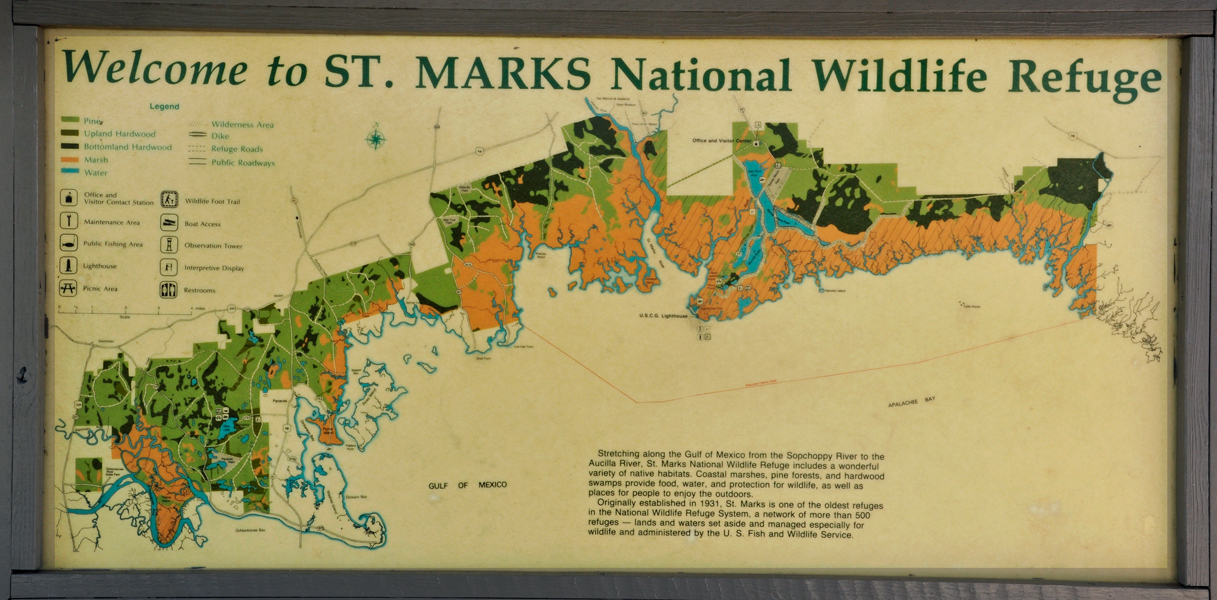 |
Below: Beautiful cloud reflections
in the waters. |
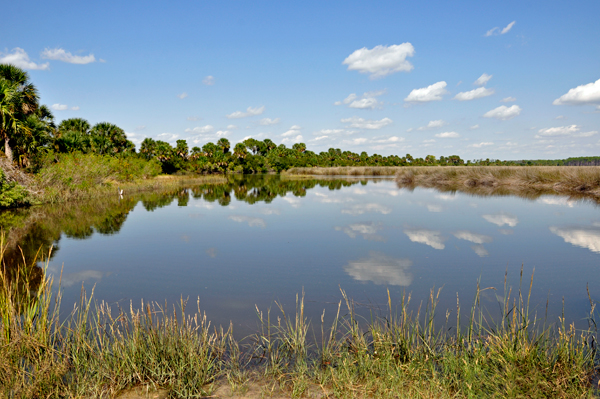 |
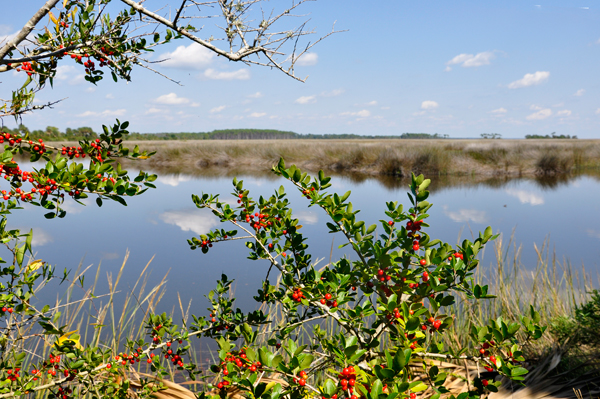 |
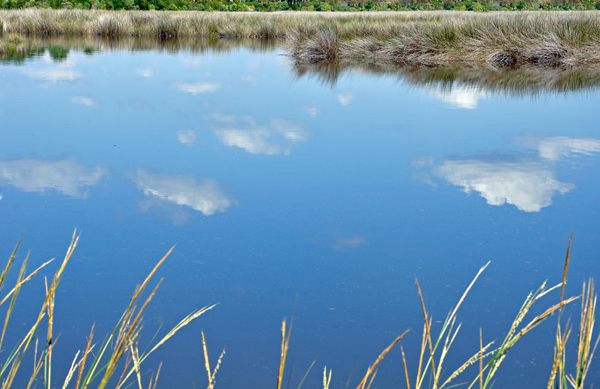 |
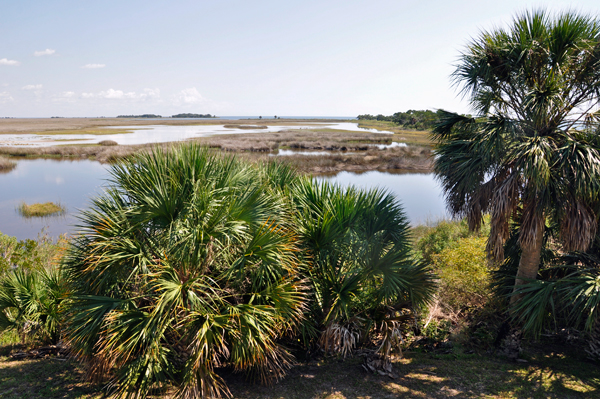 |
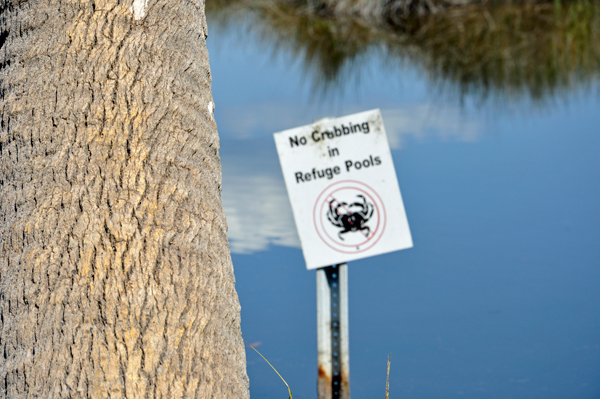 |
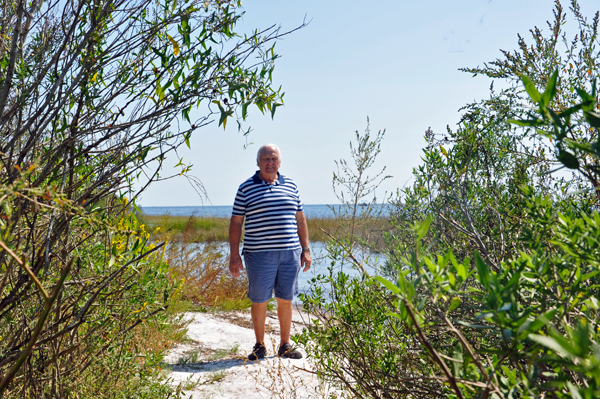 |
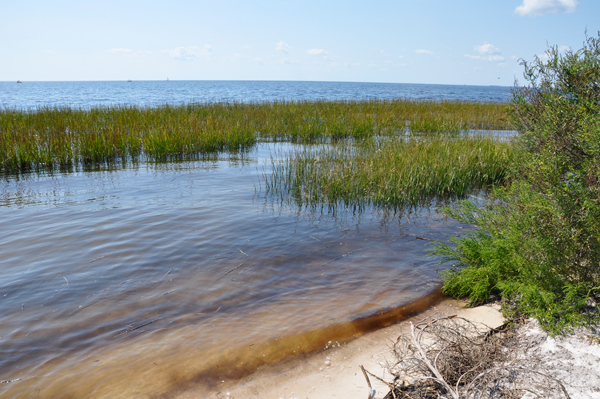 |
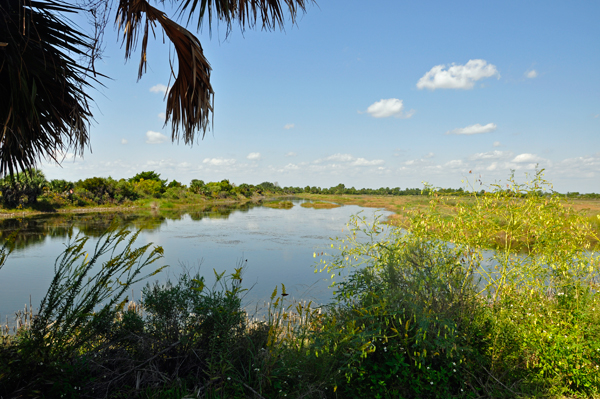 |
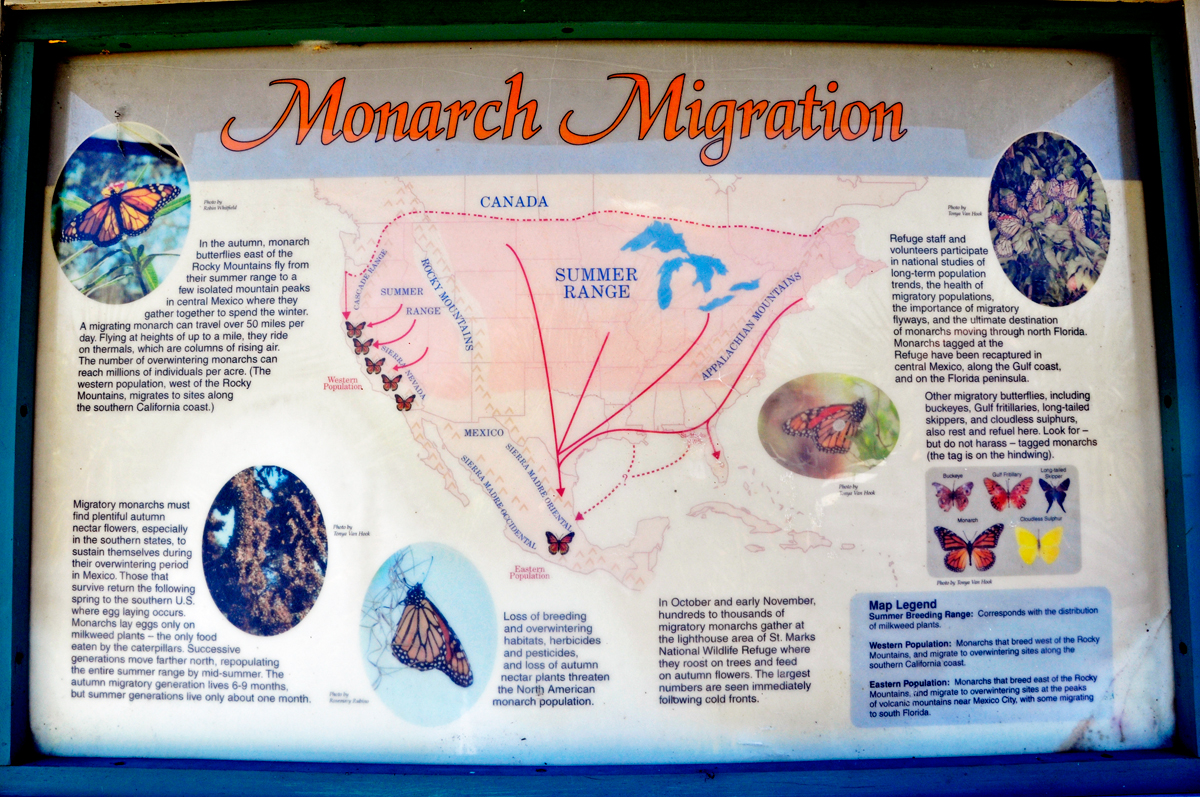 |
Below: WILDLIFE |
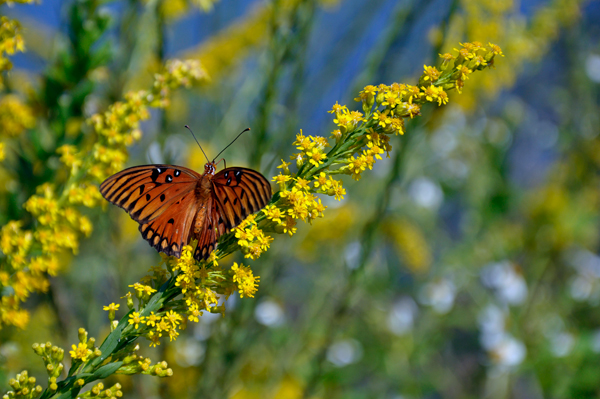 |
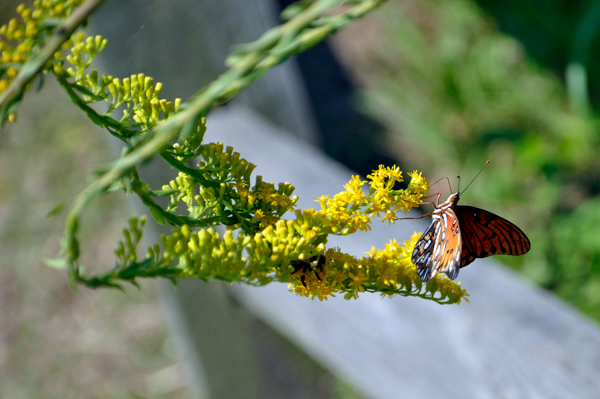 |
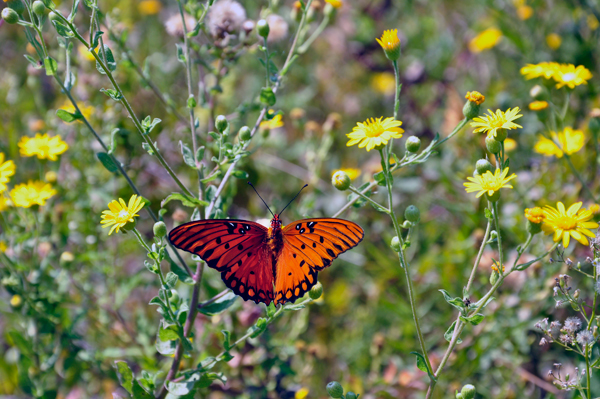 |
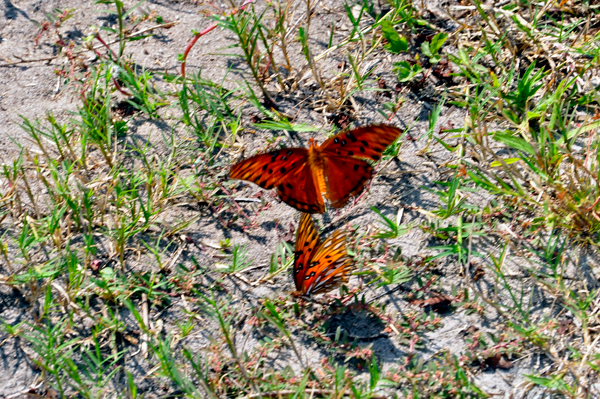 |
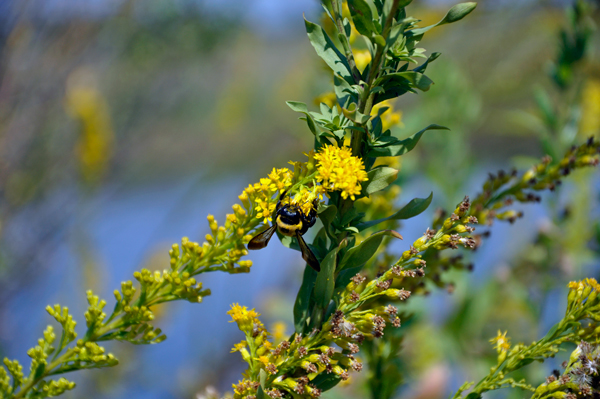 |
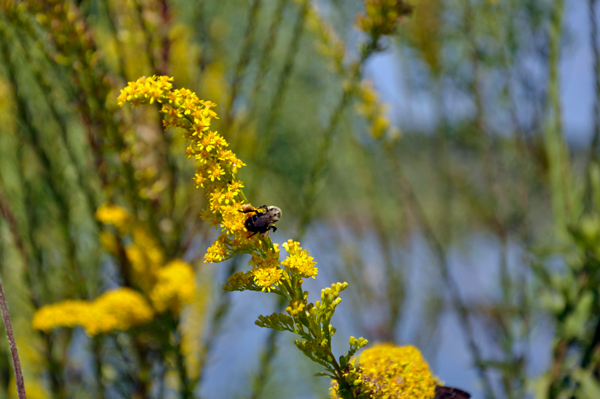 |
Below: An Alligator warning
sign. Lee and Karen Duquette did not see any alligators, but they did
get to see the fin of a dolphin as shown below. |
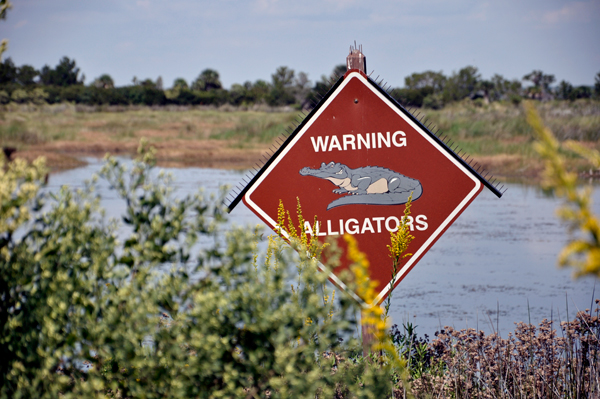 |
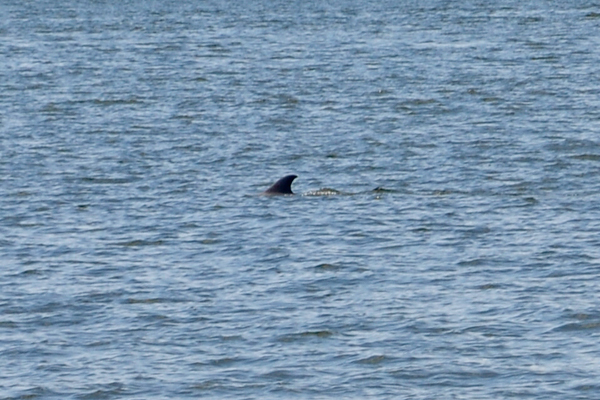 |
|
|
 |
 |
| |
 |
St. Marks Lighthouse
1225 Lighthouse Road
Tallahassee, FL 32355 |
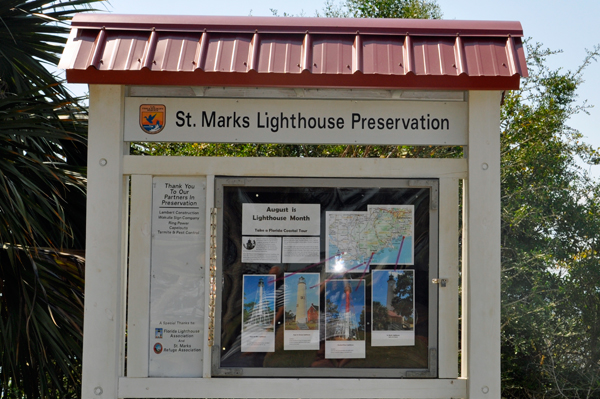 |
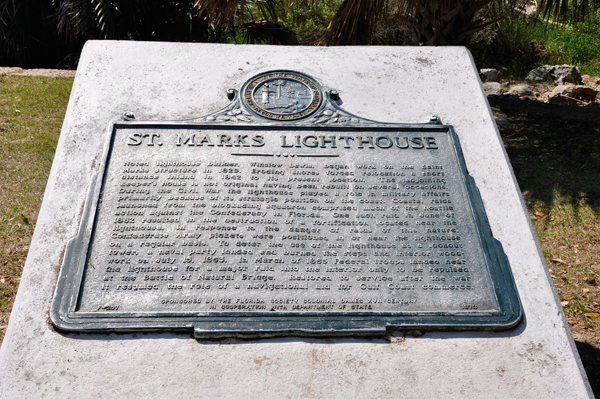 |
 The St. Marks Light is the second-oldest light station in Florida. It is located on the east side of the mouth of the St. Marks River on Apalachee Bay. The St. Marks Light is the second-oldest light station in Florida. It is located on the east side of the mouth of the St. Marks River on Apalachee Bay.
In the 1820s, the town of St. Marks was considered an important port of entry. The town served as a port for the prosperous planting region of Middle Florida and some counties of South Georgia. Growers hauled their agricultural products down to the port town in wagons by way of an early road which connected the then territorial capital of Tallahassee to the town of St. Marks. Later, this road would be widened and improved upon by the Tallahassee Railroad Company and would become the state's first railroad.
Once the agricultural products reached the new port town, they were loaded aboard boats for shipment to New Orleans and/or St. Augustine. There were, however, problems in navigating both the Apalachee Bay and the St. Marks River. In many places both bay and river were shallow, and it was not too uncommon for boats to run aground and/or get mired in the muddy shallows. |
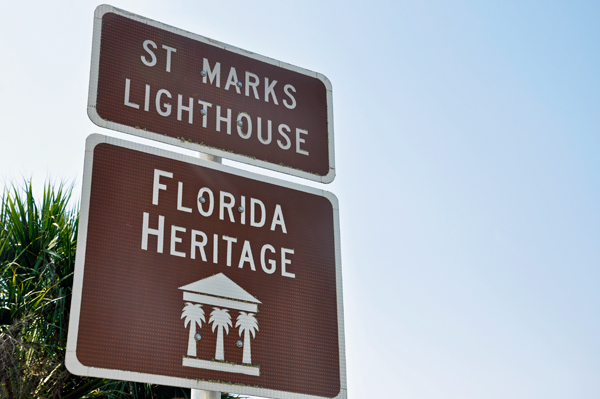 |
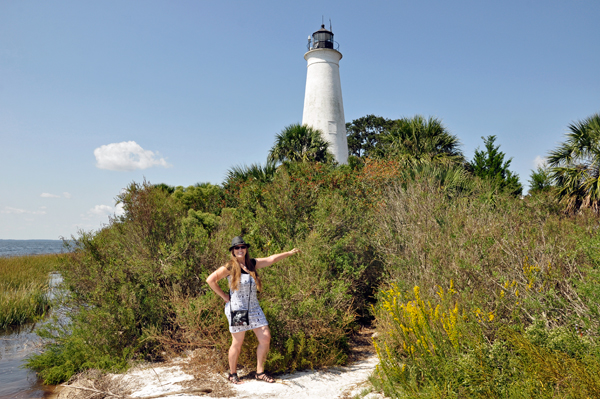 |
 In 1828, Florida's territorial Governor William Pope Duval wrote a letter to Joseph M. White, a territorial delegate in which he stressed a great need for a lighthouse at the St. Marks location. White wrote a letter to New Hampshire Senator Levi Woodbury, who chaired the Senate Committee on Commerce, reiterating the importance of establishing a light at St. Marks. Eleven days later, the committee issued a report which recognized the town of St. Marks as an official port of entry and recommended the building of a lighthouse in the area. On May 23, 1828, the U.S. House of Representatives passed an act which authorized the construction of a lighthouse at St. Marks and appropriated $6,000 for its construction. In 1828, Florida's territorial Governor William Pope Duval wrote a letter to Joseph M. White, a territorial delegate in which he stressed a great need for a lighthouse at the St. Marks location. White wrote a letter to New Hampshire Senator Levi Woodbury, who chaired the Senate Committee on Commerce, reiterating the importance of establishing a light at St. Marks. Eleven days later, the committee issued a report which recognized the town of St. Marks as an official port of entry and recommended the building of a lighthouse in the area. On May 23, 1828, the U.S. House of Representatives passed an act which authorized the construction of a lighthouse at St. Marks and appropriated $6,000 for its construction.
After a survey was completed and a site was chosen for the lighthouse, it was discovered that the initial construction sum of $6,000 would be insufficient. The appropriation was increased to $14,000, and by mid-1829 a contract was signed with Winslow Lewis of Boston for the construction of a tower in the St. Marks area for $11,765. The finished product was not accepted by the Collector of Customs for St. Marks, Mr. Jesse H. Williams, because it had been constructed with hollow walls. Williams felt that the tower should be constructed with solid walls and, therefore, refused to accept the work.
Calvin Knowlton was brought in to rebuild the tower. He oversaw its completion, and in 1831, Williams, satisfied that the light was built according to the contract, accepted the work. That same year saw the tower's whale-oil lamps lit for the first time by Samuel Crosby, who had been appointed the first Keeper of the St. Marks Lighthouse the previous year. |
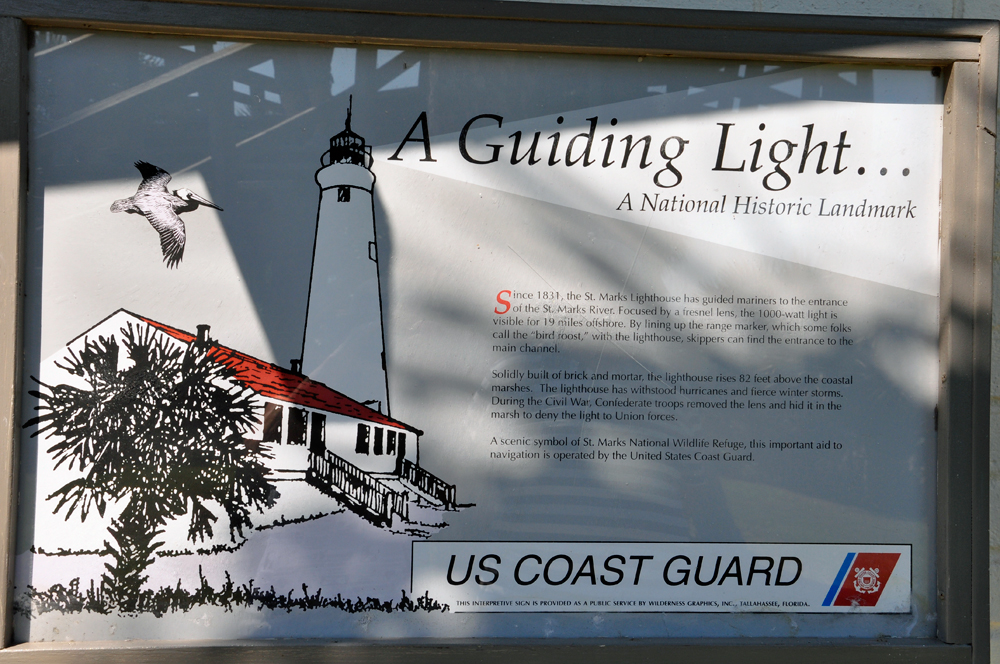 |
The lighthouse is a conical shaped tower, originally 65 feet tall in 1831 and was extended to 73 feet in 1867. The light is 82 feet above sea level. It was not an easy lighthouse to photograph. |
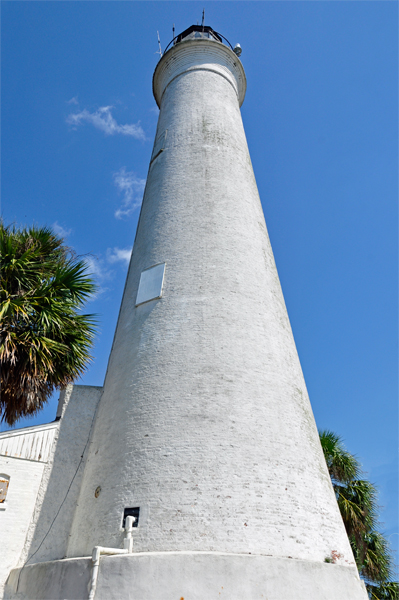 |
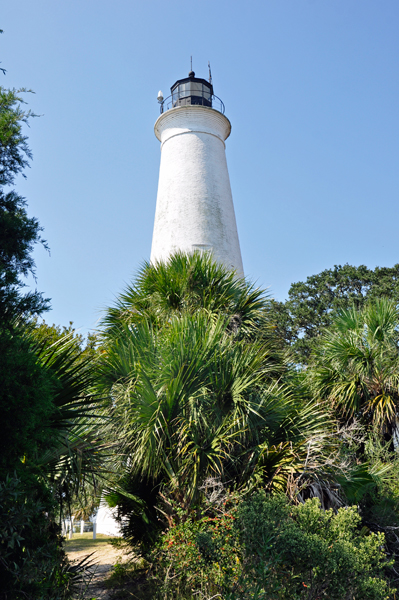 |
Below: Survivor of
the Civil War: The lighthouse tower was used as a lookout by
Confederate forces posted to defend the port of St. Marks. Fort Williams
stood near its base. (A sign about Fort Williams was posted on this
page a bit earlier.) |
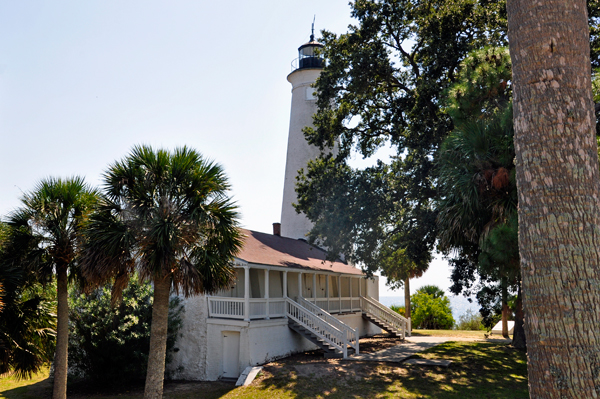 |
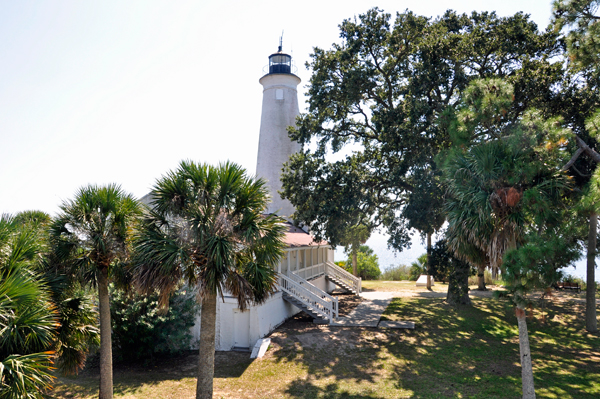 |
Below: Although the tower
itself is not open to the public, the grounds are a popular spot for
sightseeing and picnics. There is an observation platform, historic
marker and trails leading along the coast of Apalachee Bay. There are
NO restrooms in the area. |
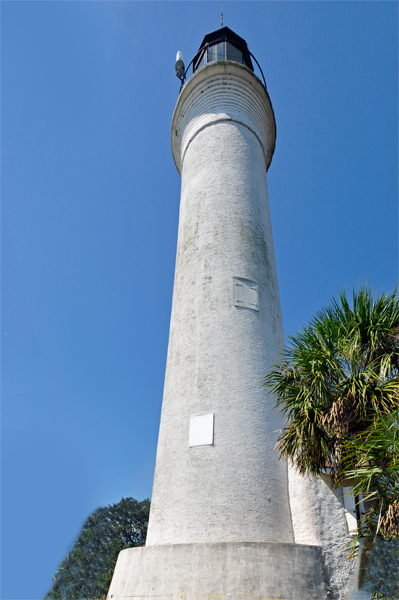 |
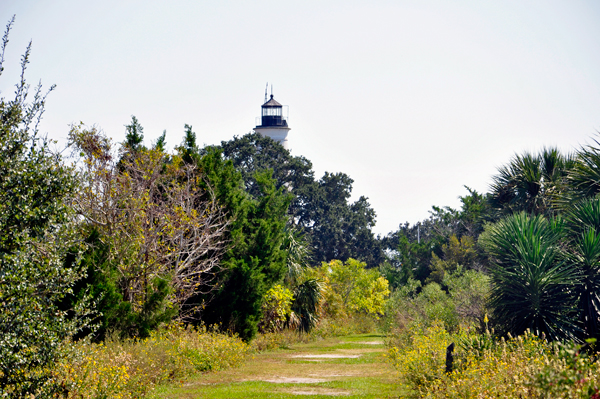 |
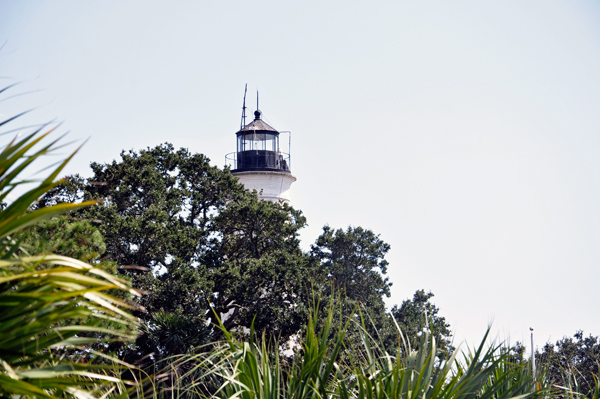 |
 |
Below: Leaving the lighthouse
area, the two RV Gypsies stopped at Picnic Pond and had a nice
picnic lunch with a nice view of the pond. |
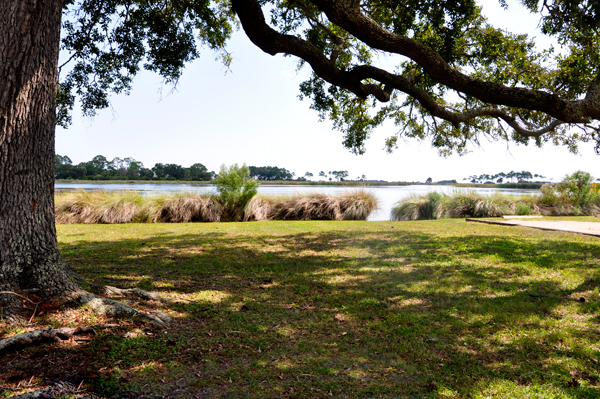 |





































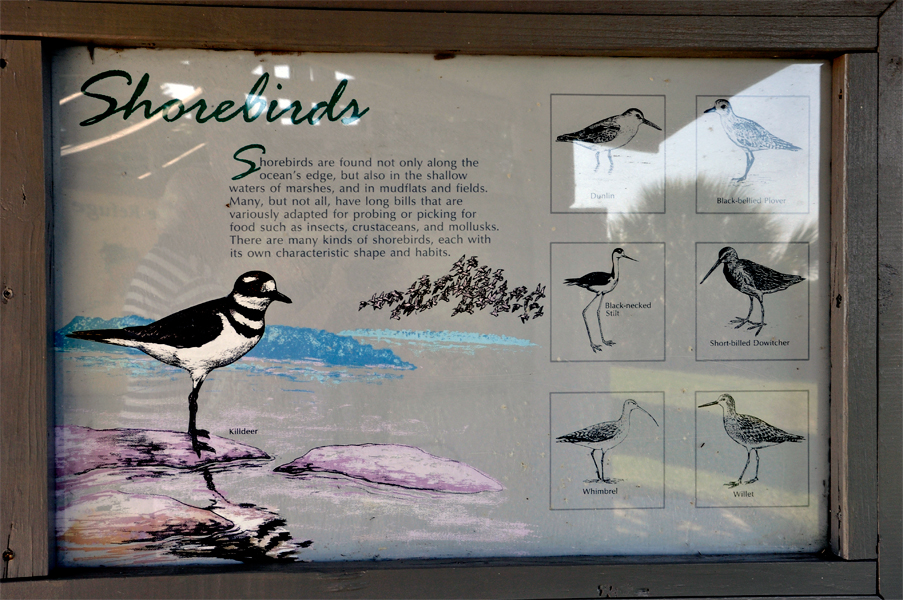
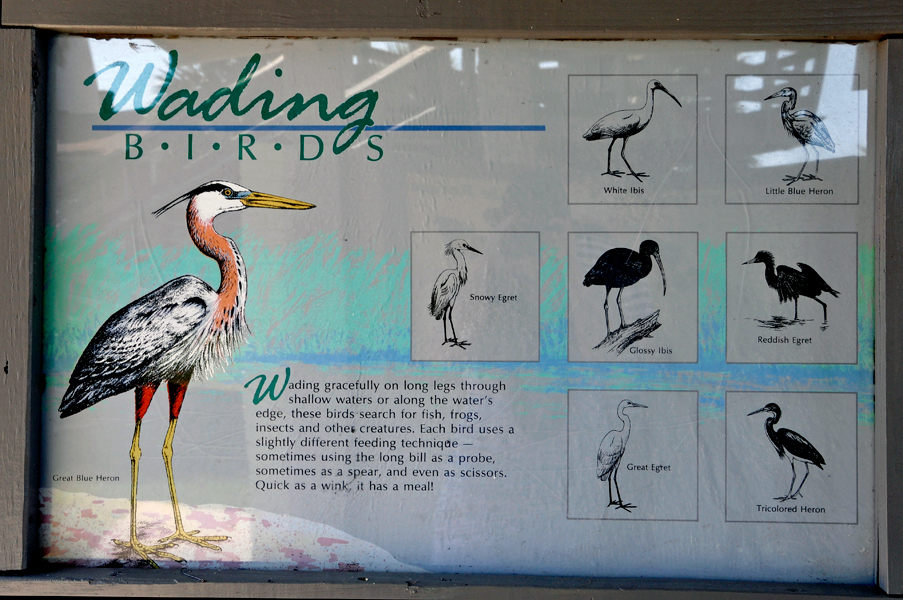









































 The St. Marks Light is the second-oldest light station in Florida. It is located on the east side of the mouth of the St. Marks River on Apalachee Bay.
The St. Marks Light is the second-oldest light station in Florida. It is located on the east side of the mouth of the St. Marks River on Apalachee Bay.


